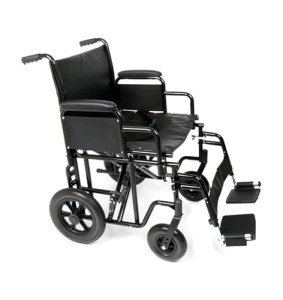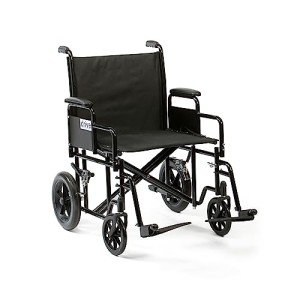You'll Be Unable To Guess Bariatric Mobility Equipment's Secrets
작성일 25-02-01 15:51
페이지 정보
작성자Jasper 조회 7회 댓글 0건본문
 What to Look For When Selecting Bariatric Mobility Equipment
What to Look For When Selecting Bariatric Mobility Equipment Bariatric mobility equipment helps health care facilities provide safe and dignified care for obese clients. To make sure a positive experience for both patient and staff, it's crucial to know what to search for when selecting this equipment.
Bariatric mobility equipment helps health care facilities provide safe and dignified care for obese clients. To make sure a positive experience for both patient and staff, it's crucial to know what to search for when selecting this equipment.Review producer cleaning standards and sanitising suggestions. Think about a variety of safety features including reinforced frames and locking systems.
Size
Bariatric equipment is developed with bigger platforms, increased weight capabilities and greater physical measurements to help individuals who weigh more than standard-sized users. This includes people with a Body Mass Index (BMI) of 30 or more. In addition to bigger sizes, bariatric mobility aids use cushioned seats and head assistance, improved stability and much easier maneuverability to promote comfort and security for patients and caregivers.
While the need for specialized bariatric wheelchair 600 lb capacity mobility equipment is increasing, lots of healthcare facilities lack this essential equipment. To avoid putting clients at danger, physician must thoroughly evaluate all choices offered before selecting the very best bariatric mobility equipment (visit the following page) for their center.
Properly picked and used, specialised managing equipment gets rid of unneeded struggle that leads to injuries during transfers, repositioning and moving. Manually lifting or bariatric mobility equipment moving a patient significantly increases the risk of back, shoulder and wrist strain, joint damage and fatigue that can trigger judgement lapses and mishaps. This type of handling also exposes personnel to moral distress, specifically when they are not able to help patients safely and dignifiedly.
To reduce stress on caregivers, bariatric mobility equipment is usually motorized to reduce push/pull forces and help with manoeuvring over distances. To maximize security, therapists need to have input into all equipment selections and utilize early in the buying process to guarantee suitable sizing for patients as well as to determine unique requirements that need innovative device customization or facility renovations like expanded corridors, doorways and ramps.
When looking for a bariatric wheelchair, scooter or bed, medical equipment suppliers should provide details about the gadget's weight capacity, physical dimensions and building. This information is handy for comparing the features and benefits of each option. Putting in the time to completely examine this type of capital equipment can decrease the cost of acquisition, smart funding and annual maintenance. This is especially important for bariatric mobility equipment that might go through more use and tear than standard-sized gadgets. This is why choosing the best gadget for each client and setting is important to minimizing direct expenses as well as indirect costs connected with bad results.
Weight Capacity
Unlike standard medical equipment, bariatric mobility aids are designed for clients who weigh 350 pounds or more and have a body mass index (BMI) higher than 30. Utilizing undersized or non-bariatric equipment with these patients can lead to discomfort, skin breakdown, injuries and falls-- not to point out additional staff time and effort.
Safe dignified client handling is necessary for all healthcare workers. However, it can be challenging for staff to manage overweight clients without the ideal equipment. This is especially real for mobile clients with elevated needs that require help to move from bed, toilet or chair.
The best sized bariatric wheelchair and patient lifts allow individuals to maintain independence with comfort, self-confidence and dignity. It likewise enables nurses and other staff to focus on medical care instead of manual moving maneuvers that can lead to worker injury.
When choosing bariatric wheelchair weight mobility aids, it is necessary to consult the product sizing guide and weight capacity ranking before buying. The sizing guide should be plainly shown in the health center or clinic so that it is easy for clients and households to discover.
Committed storage area must be readily available for the safe and easy retrieval of equipment when it is not in use. This will assist to avoid overuse or misuse that could trigger damage to the equipment and security risks for clients.
Other bariatric travel wheelchair equipment consists of slings and slide boards that attach firmly to client lifts for transferring bigger clients with ease. These devices use momentum and low friction to ensure smooth, steady transfers. They are also perfect for rearranging overweight patients in beds or chairs, helping to avoid pressure ulcers.
Exam tables are another crucial piece of bariatric mobility equipment for helping much heavier clients. Bariatric test tables use greater load capacities and wider widths than basic designs to permit much safer and more comfy positioning of obese patients. Electric variations with powered height change likewise make it simpler for staff to access and treat wounds. In addition, the broad bariatric lift bases and longer booms on some equipment permit users to be moved quickly from wheelchairs and stretchers.
Safety
Bariatric client mobility equipment is larger, heavier and more robust than basic medical devices. It might therefore be more difficult to manoeuvre over long distances or to transport throughout a facility. However, with the ideal training and an extensive understanding of safe handling methods, staff can mobilise clients efficiently without unneeded struggle or threat to them or their care.
The most essential safety features of bariatric mobility aids consist of:
Utilizing the best sized equipment for transfers avoids overworking staff or putting too much pressure on joints and tissues. It likewise reduces injuries brought on by mismatched equipment and slings. Bariatric slings connect securely to lift equipment and cradle the body, making them ideal for a wide variety of body shapes. They likewise include padded edges to protect vulnerable skin and enhanced construction for sturdiness. Motorised floor raises incorporating force sensors allow caregivers to control transfer motions to guarantee they stay within safe working load limitations during complex manoeuvres. Powered adjustable width transfer surfaces simplify client manoeuvring, specifically over limits and through doors. Virtual reality simulation systems make it possible for safe handling practice and assessment of bariatric movement capabilities.
All bariatric mobility aids should be checked for damage, wear and tear before and after every usage and kept safely when not in use to prevent tripping threats. They need to be frequently cleaned and sanitised to prevent infection. Personnel should always follow maker sizing standards and weight limitations for bariatric mobility aids. Including therapists early in mobilisation preparation helps to figure out proper equipment needs based upon particular mobility and practical goals.
Executing an extensive client dealing with program that includes all of the above functions changes care experiences and improves results. This requires leadership priorities, budgeting, policies, training and culture building. Thoroughly assessing the appropriateness of a device and selecting an authorised provider that uses the complete series of alternatives will help to achieve these objectives. Using a developed expert in bespoke mobility options is a great way to attain this. They can offer a complimentary assessment, trial leasings and help to find the very best service for your special needs.
Versatility
Selecting professional bariatric mobility equipment supports safe, dignified care for individuals with high body weights. It can lower staff tiredness and injury, and assist deal with quality of life concerns brought on by immobility. Nevertheless, successful application of these specialised aids depends on facility top priorities, spending plans, training and policies.
Bariatric chairs have broader seats and enhanced frames to accommodate a larger weight capacity compared to standard wheelchairs. Some also have reclining back-rests and cushioned arms to supply comfort. Many have battery-powered alternatives for self-propulsion, minimizing transport and steering efforts. Bariatric beds can manage individuals up to 1000 lbs and have actually broadened surface areas that include more body size and weight. Some have power choices to change bed height with the touch of a button, making it much easier for nurses and caregivers to carry out injury care or administer medications without pressure.
As with all medical equipment, bariatric mobility solutions need to be thoroughly tested before use. Carefully evaluating the fit, function and ergonomics of equipment helps personnel feel positive utilizing it. Training on proper handling principles and methods-- consisting of sling option, fitting, maintenance and storage-- is important to minimise strain. Facilities must develop a bariatric handling committee to collaborate synergy and assistance training and optimisation.
Monitoring equipment usage and condition requires a clear plan and process, especially for heavy items like bariatric folding wheelchair wheelchairs, beds and hoists. Regular audits of equipment, cleansing and upkeep needs must be undertaken to identify any concerns. Facilities ought to also examine policies and equipment choices routinely, particularly when a brand-new variation is readily available that might enhance security, stability or ease of use.
Bariatric mobility equipment is typically more pricey than basic healthcare equipment, but the upfront expense can be offset by reducing employee injuries, staffing requirements and expensive complications arising from manual handling. By thoroughly examining the requirements of a facility and client population, as well as selecting an experienced partner to supply the very best equipment for the job, organisations can reduce expenses in the long run. For example, renting bariatric equipment enables flexibility to update models when new innovations are released, and prevents the cost of saving equipment that is not in usage.
댓글목록
등록된 댓글이 없습니다.